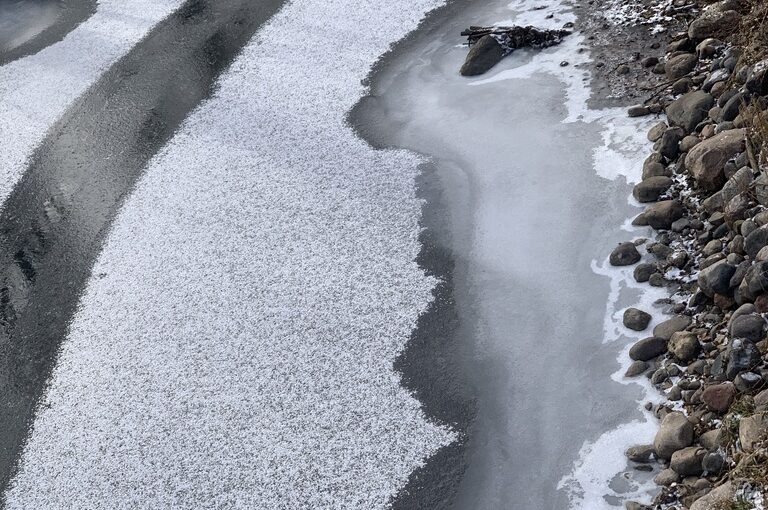Saturday, 18 February 2023
The winter here has been weird – a couple of sub-zero weeks, a couple of warmish (32ish) weeks, repeat. I run several days a week, mostly along Minihaha Creek, which winds through south Minneapolis. With the variations in temperature there is a lot of thawing and refreezing, and that, combined with changing water levels in the creek, results in marvelous ice crystals. Mostly they are two dimension intergrowths of needle-like crystals, almost fabric-like in their structure.
Below you see the general context. You can see the frozen creek, and more interestingly you can see differing textures of ice that silhouette the stream’s channel. I presume that the depth (which means the water cools more slowly), and degree of movement of the water (ditto), effects the rate at which crystals form. In geology the more slowly something cools, the bigger its crystals. (Note that ice meets all the geological criteria for something to be considered a mineral and thus a rock, and so I enjoy envisioning that I am running through a (cyro-)volcanic landscape with barely cooled rock.)
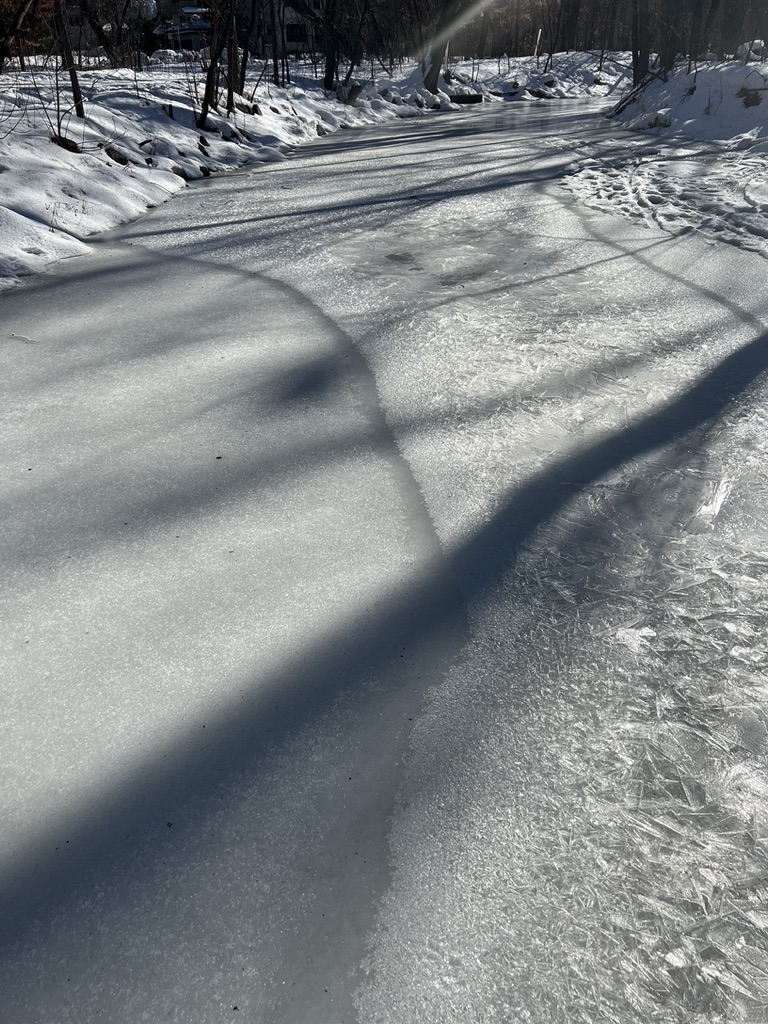
Below is another picture — this is perhaps 2 x 3 feet — that shows a region of ice with an acicular (needle-like) fabric of crystals. Water takes on an amazing variety of crystaline forms as it freezes, depending on the temperature and humidity. Acicular forms are common at close to 32° F; however, if the temperature drops rapidly, the water can stay liquid well below the freezing temperature (this is called super cooling), until something, usually a bit of dust or other material, creates a nucleus for ice crystals to form around.
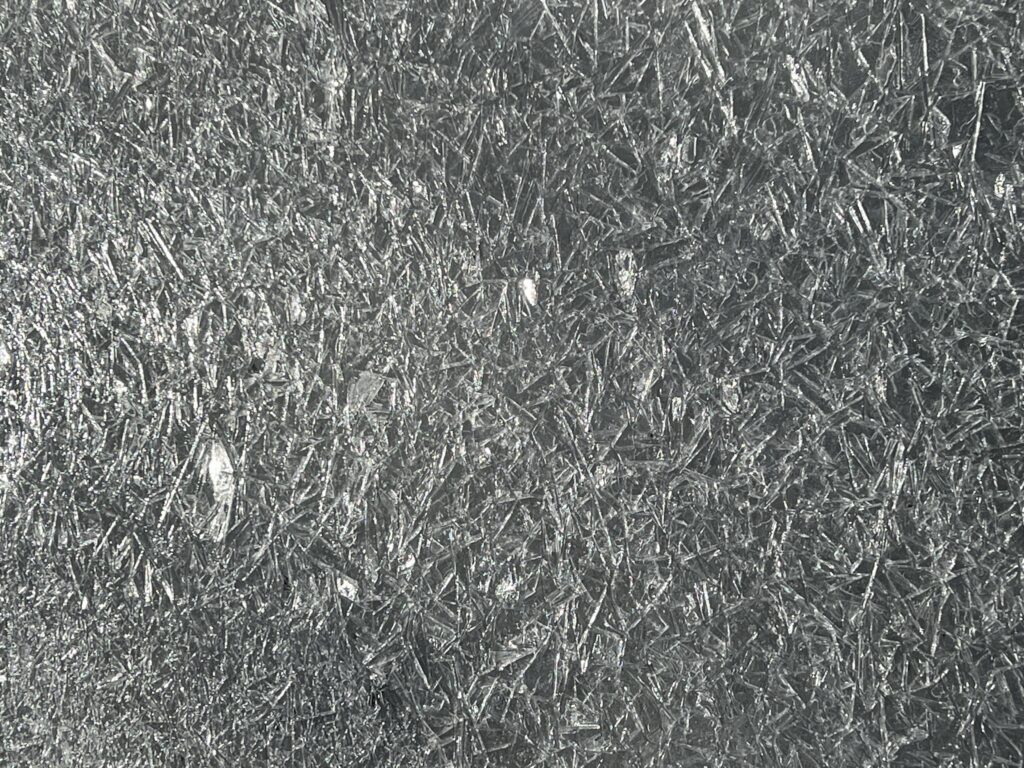
The above picture shows a homogenous area in mid-stream, but if we focus more towards the edges, there is a clear progression from small (fast-forming, because the water is shallow) crystals to larger ones in the more slowly cooling deeper water.
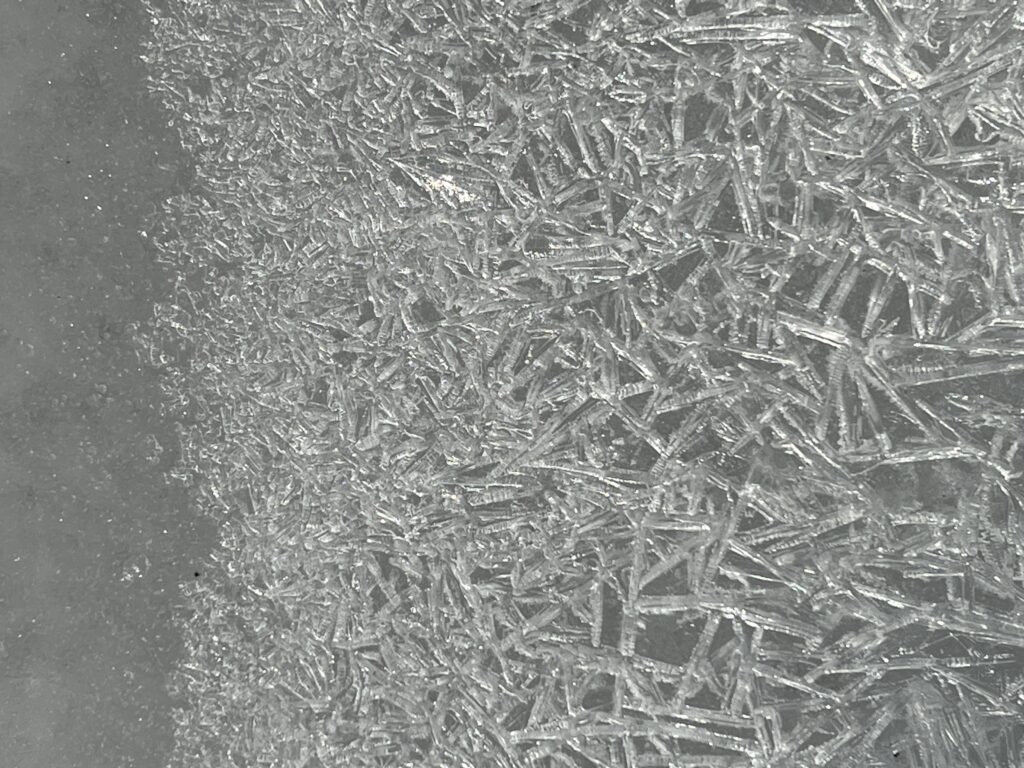
One day, during a period of intense cold, I noticed an unusual pattern on the ice on part of the stream. It was as though there were tiny pyramids or piles of snow – about a square centimeter in area – separated by an equal amount of space.
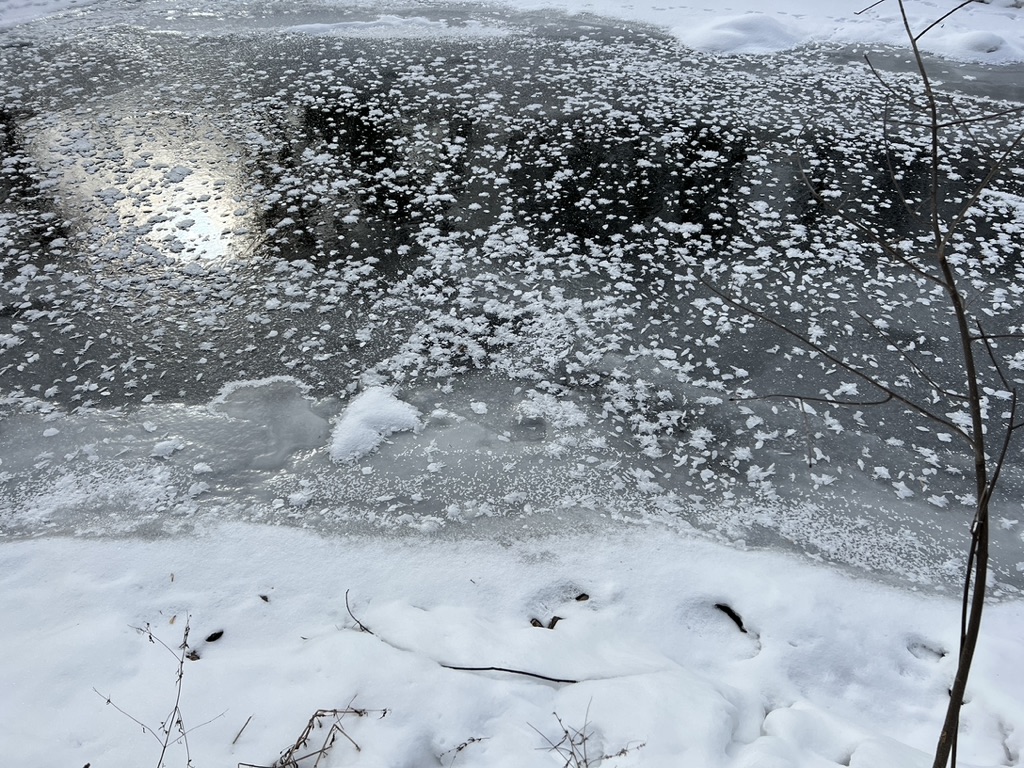
On closer inspection, the ‘piles’ were not miniature mounds of snow, but rather pyramidal crystalline structures. Perhaps open water had frozen over while there was still a lot of (super cooled?) water vapor in the air, and the vapor then crystallized onto the surface of the ice? I have no idea, really, but that at least helps describe what I saw.
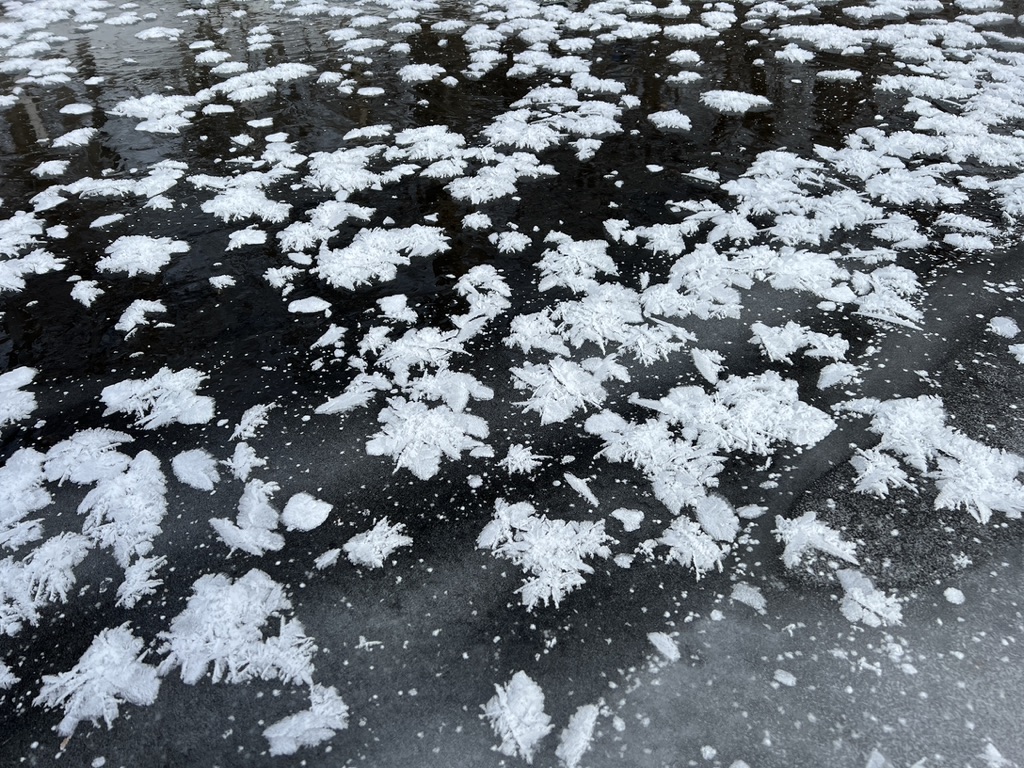
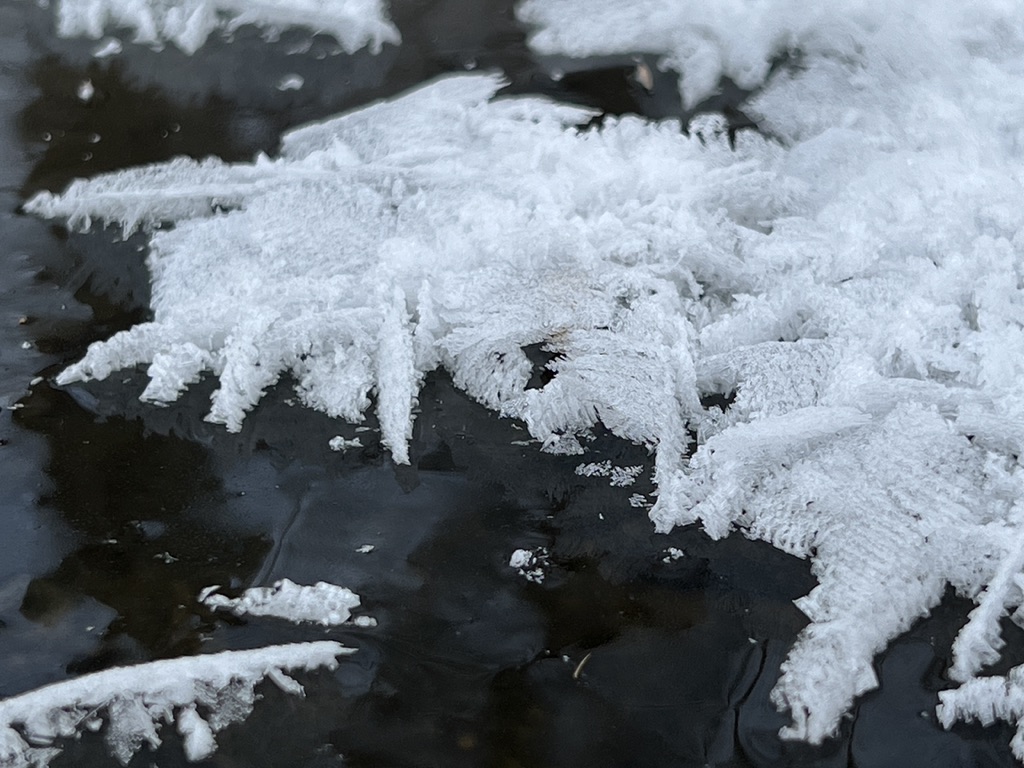
If you look closely at the fine structure you can see a lot of different forms of crystal growth like dendrites and hexagonal growth patterns.
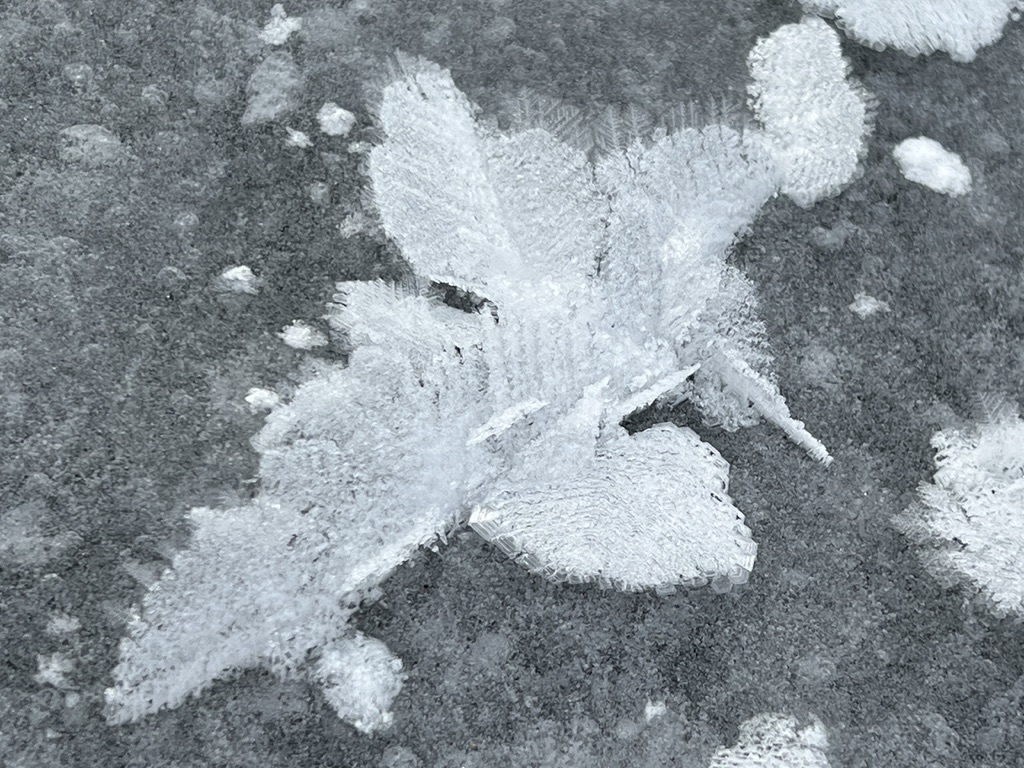
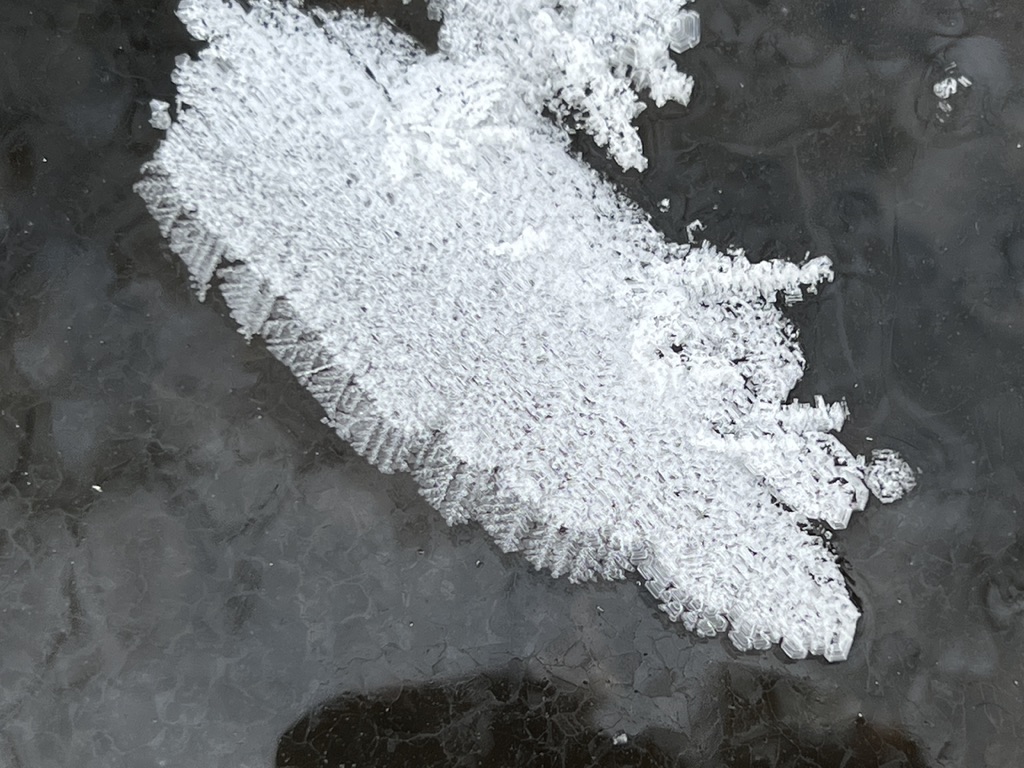
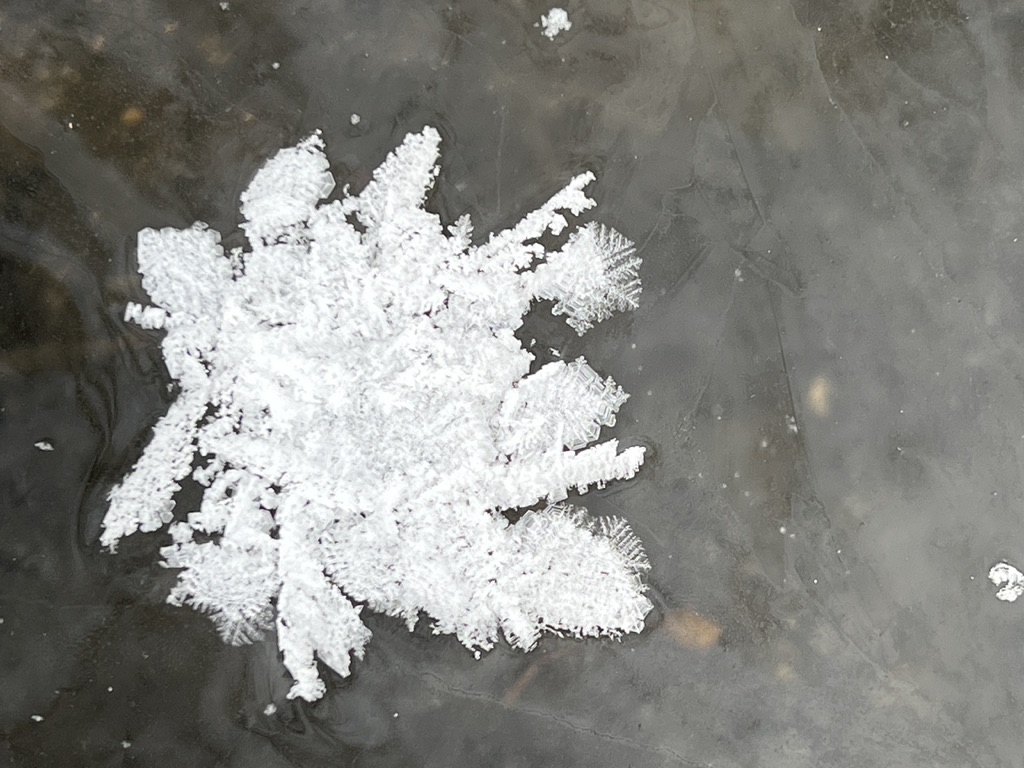
Stepping back, another thing that’s interesting is that you can see changes in the freezing regime. In the picture below there is an abrupt change from isolated ‘pyramids’ surrounded by clear ice to pyramids surrounded by speckled ice, the speckles being smaller ice crystals. In geological terms this indicates increased “nucleation,” which most likely indicates a rapid temperature drop in air temperature as the surface ice was growing out over deeper water.
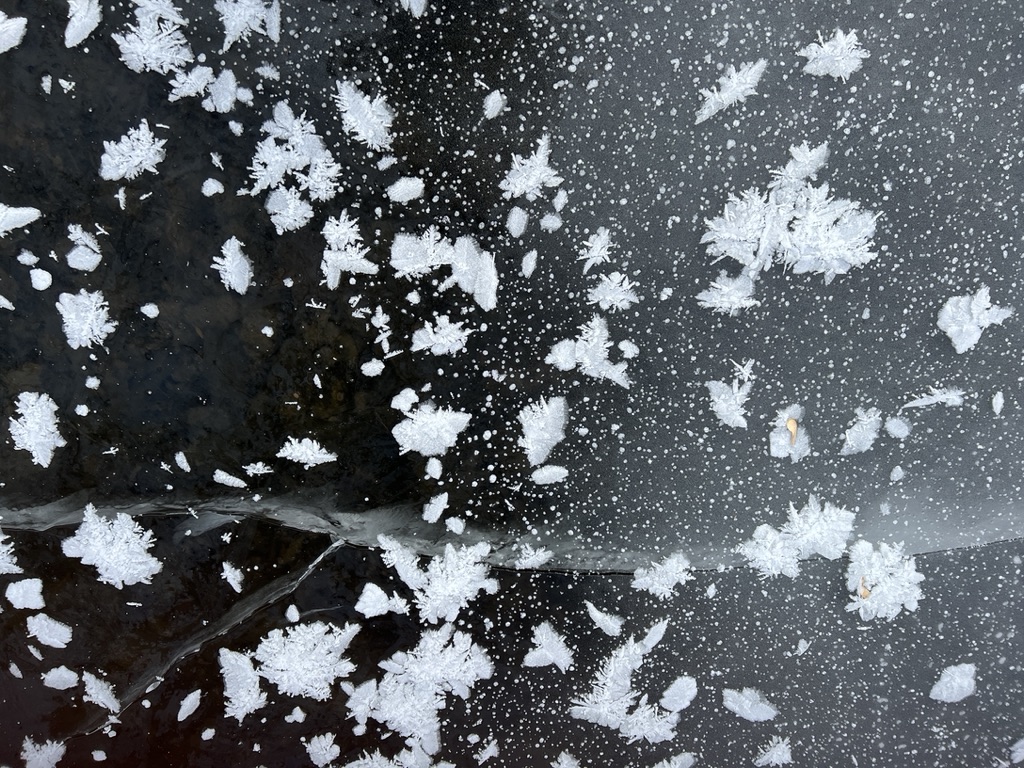
Another thing I like about ice – at least ice on the surface of streams – is its color. Early in the season it can be nearly transparent. Also, if the weather cooperates and there is a very, very light snow, the snow can frost the surface of the ice in such a way that it reveals the temperature of the water beneath the ice. That is, the light dusting of snow persists where the sub-surface water is cold, but melts or sublimates on areas where the water below the ice is warmer. This can reveal the deeper (warmer) primary channels of the stream,and, more interestingly, small springs at the bottom of the channel — usually appearing as circles or ellipses — as in the rightmost picture below.
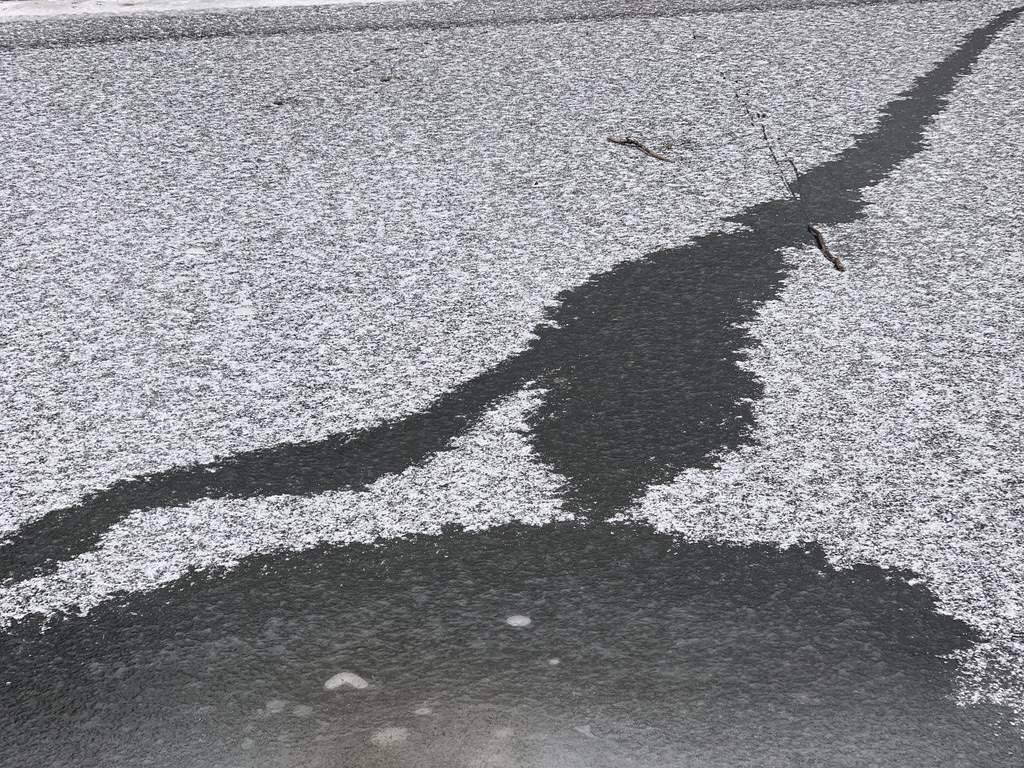
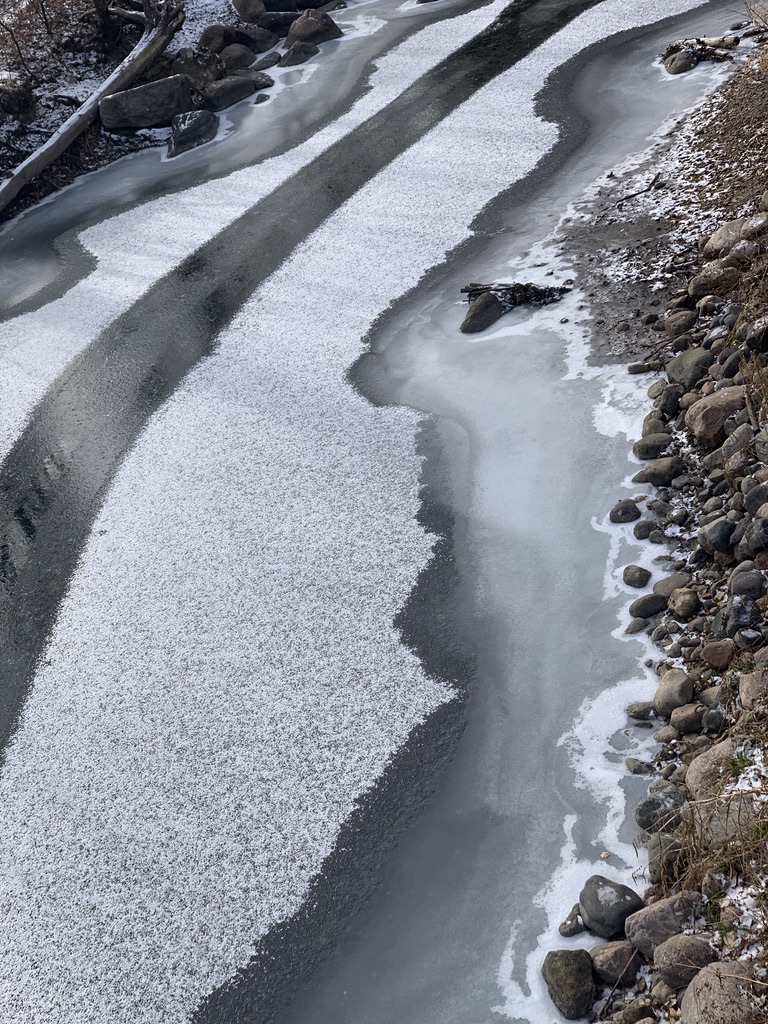
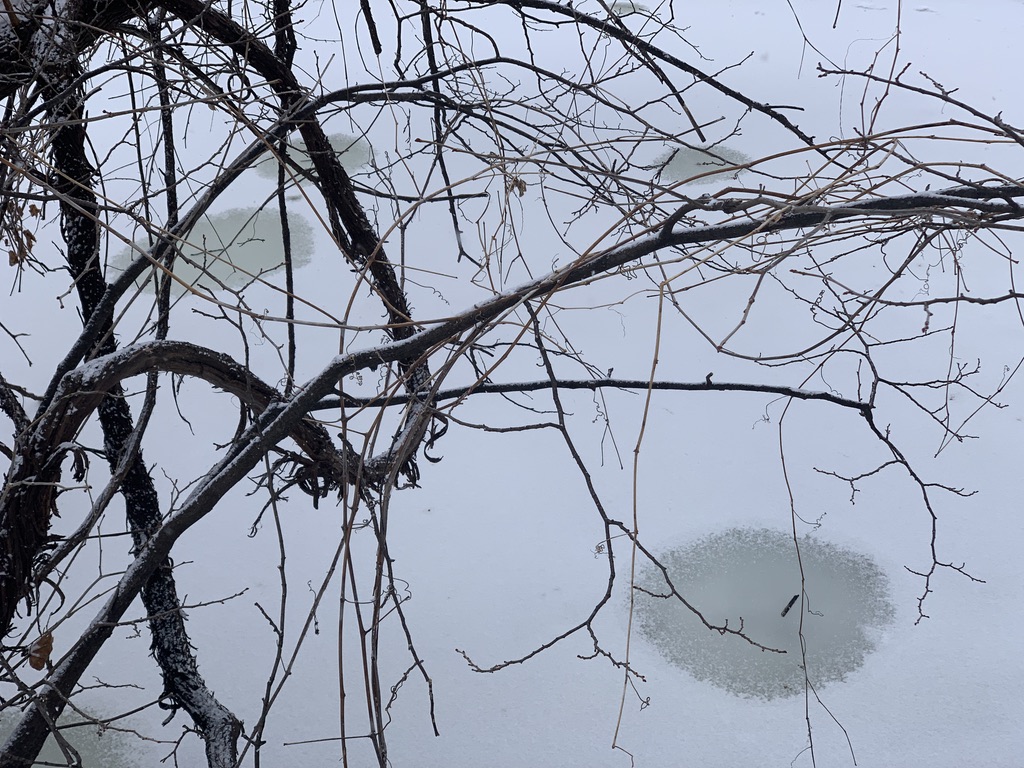
Once the winter has progressed, and the ice has thickened, these features vanish. Instead, the transparence of the ice shifts: early on it goes from clear to a translucent gray and – supplemented by snow, slush, and simply many freeze-thaw cycles, an opaque matte white. After the solstice, areas of the stream that receive increased light develop a greenish tinge: my reading suggests that this is due to algae, either in the ice, or just below.
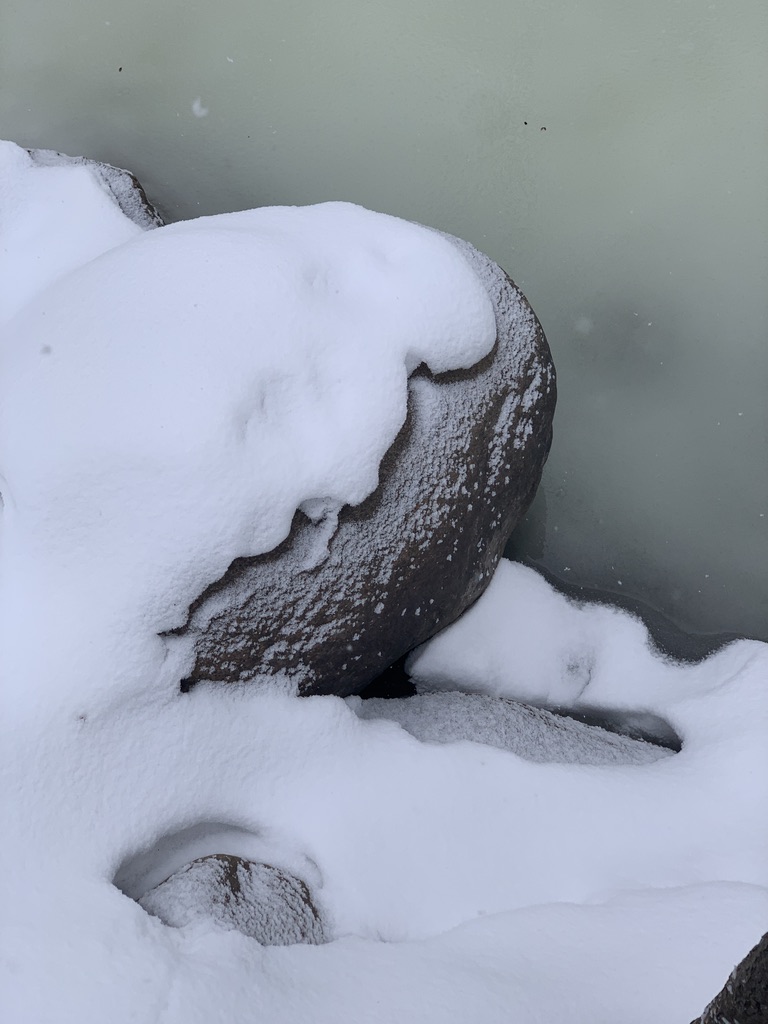
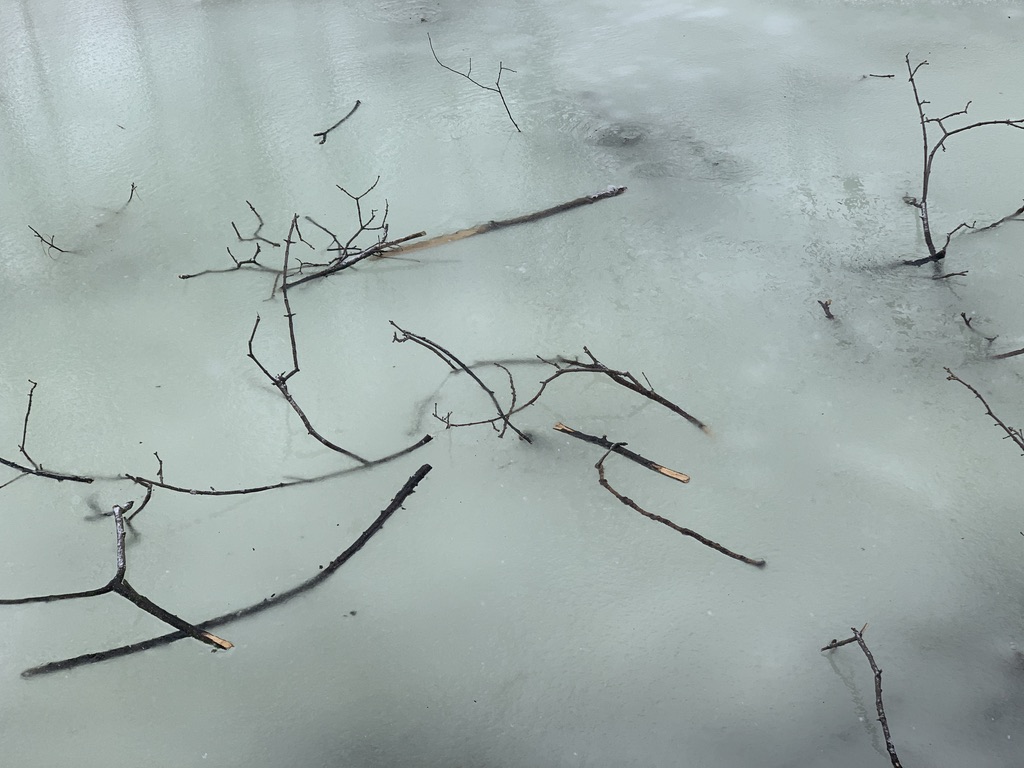
That’s it!
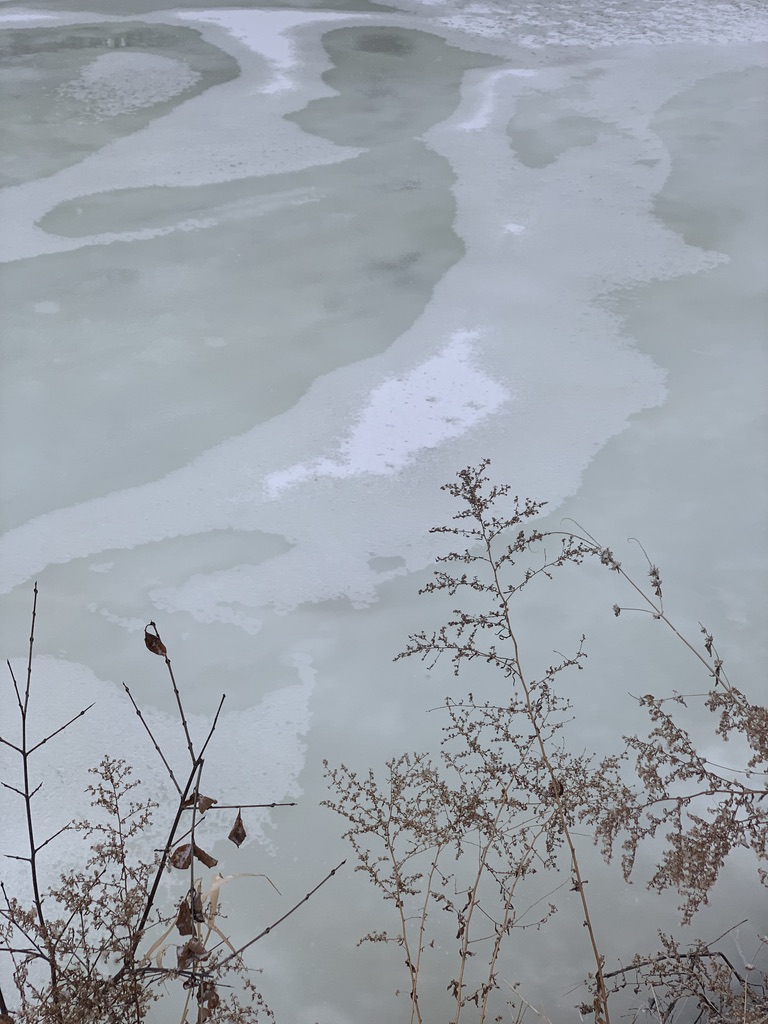
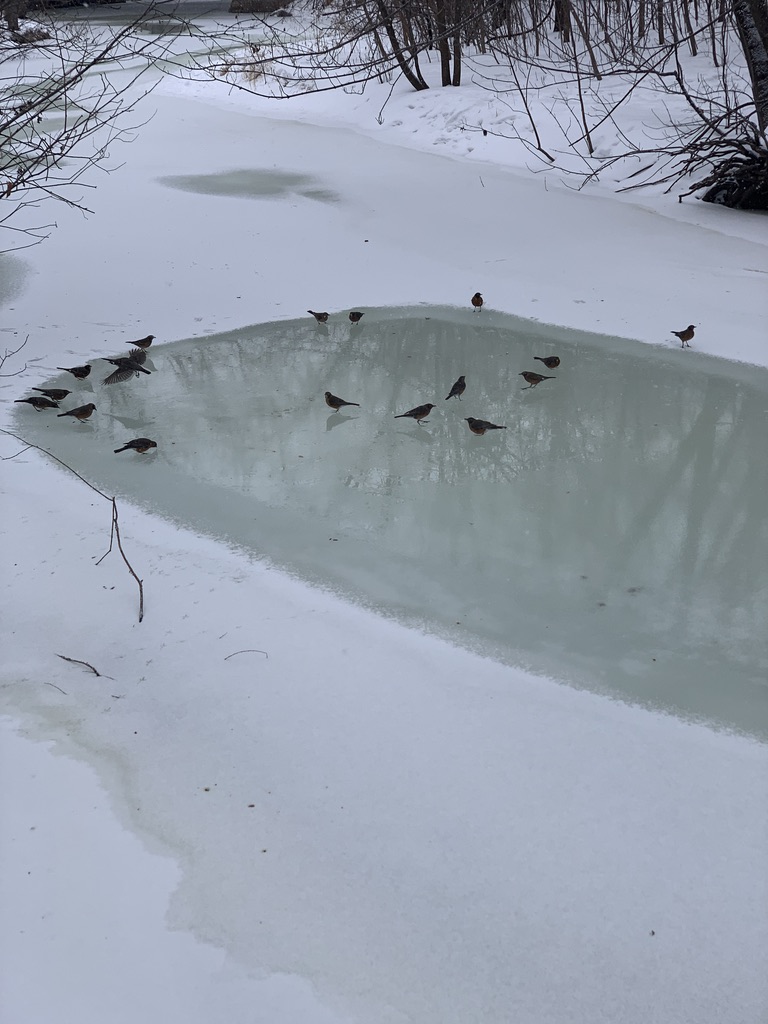
Views: 6
